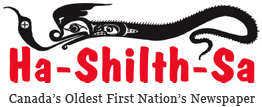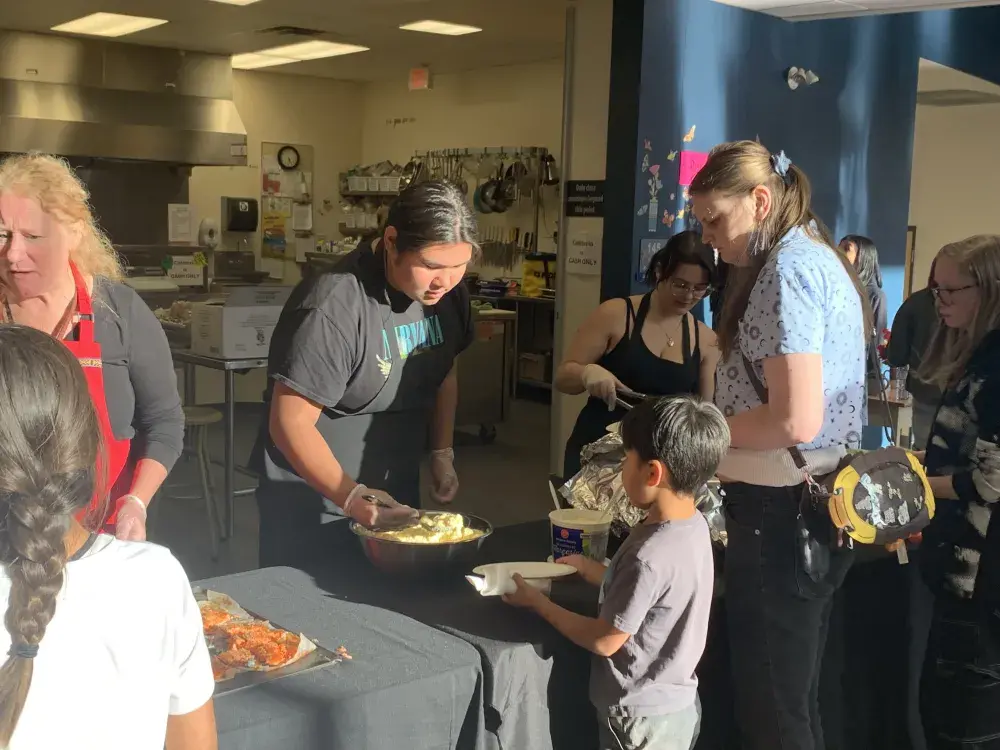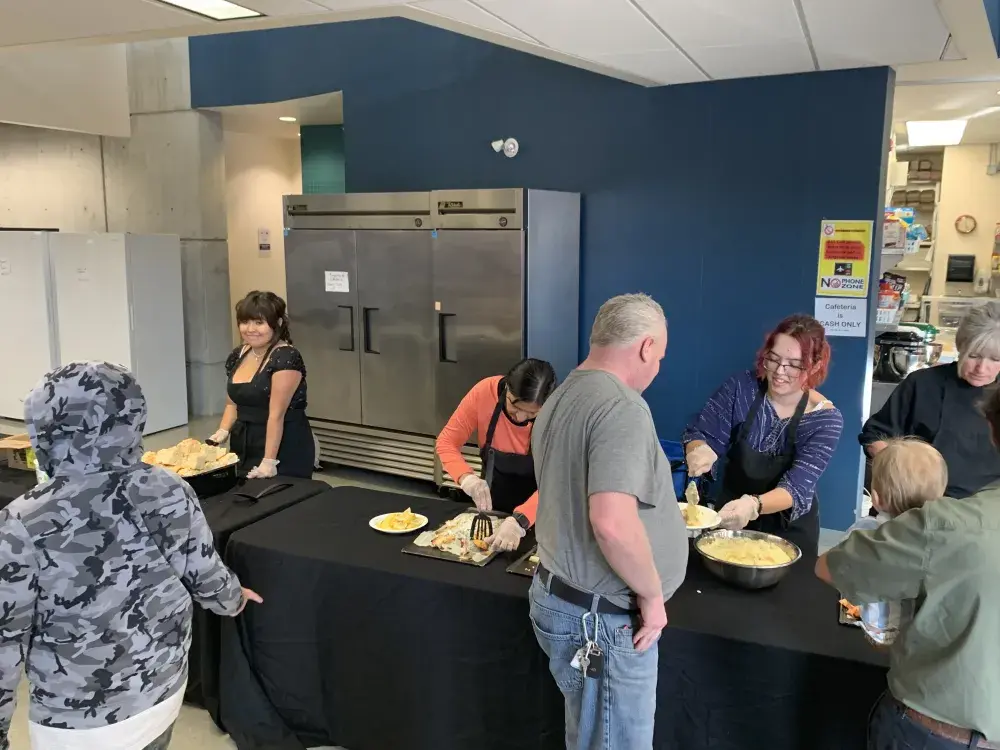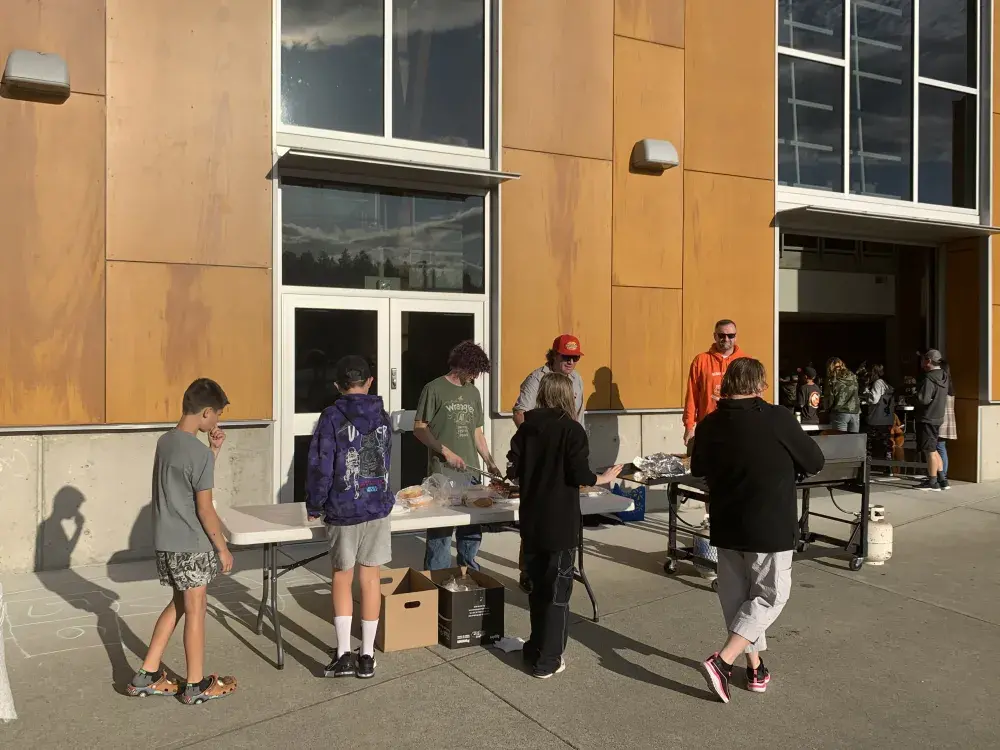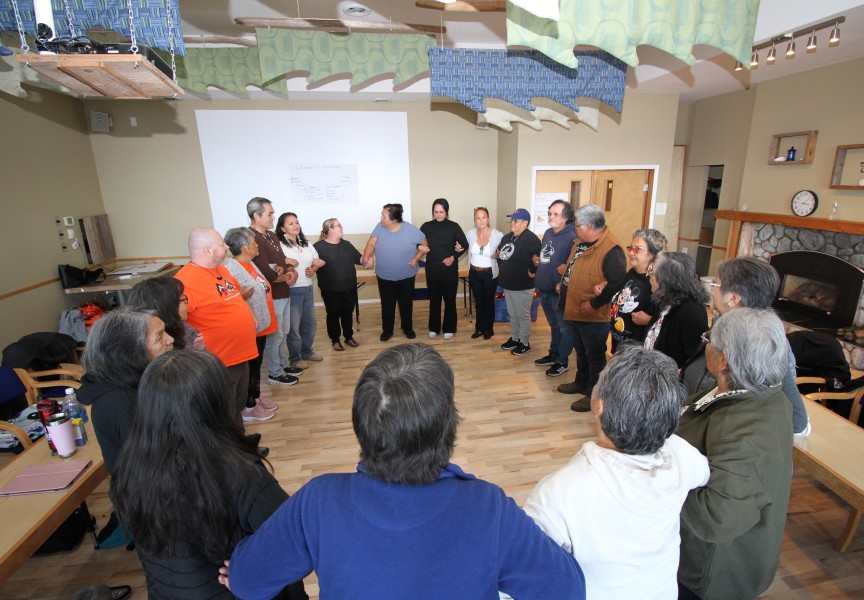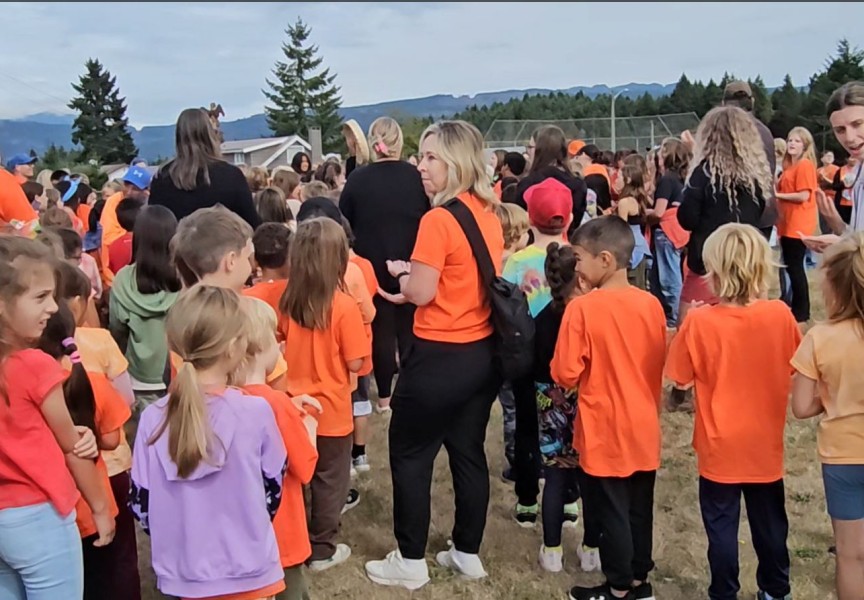In what has become an annual tradition, staff of ADSS (Alberni District Secondary School) along with the Indigenous Leadership Team threw a barbecue dinner as they welcomed new students for the 2025/26 school year.
According to Deborah Potter, who is an Indigenous Support Worker (ISW), the barbecue was held at ADSS on the evening of September 25.
“Primarily, the incoming Grade 8 students and their families attend this event, but we open it up to any student that wants to attend because we believe it is a positive and powerful thing to get parents and families into the building,” she told Ha-Shilth-Sa.
Indigenous support Workers are a team that assist Aboriginal student in their academics and also in the promotion of First Nations culture in the school. The team is made up of former Nuu-chah-nulth Education Workers (NEW) that transitioned from employment with the Nuu-chah-nulth Tribal Council to SD70.
Jaime Hansen, an Ahousaht member and director of Instruction Indigenous Education for SD70, says the Indigenous Support Workers primarily carry out the same duties they had in previous years when they were employed with the NTC. A change in federal funding forced the end of the NEW program in June 2024, but since then the school district has been able to continue with the additional support.
This is the third year that SD70 has had Indigenous Support Workers at Alberni Valley public schools and also in Bamfield, Tofino and Ucluelet.
“They (ISW’s) support Indigenous students around cultural teachings, language… they all have different skill sets that they bring to table,” said Hansen.
An important goal of these workers is to keep Indigenous students engaged in their education journeys, helping improve graduation rates. They provide academic supports while promoting First Nations culture in the schools.
Based on data from the B.C. Ministry of Education, this assistance appears to be working. Back in 2010, just 34 per cent of SD70’s Aboriginal students completed high school within six years of starting Grade 8 – thirty points behind other students in the district at the time. But by 2024 the Indigenous high school completion rate had risen to 81 per cent, while other Pacific Rim students increased to 90.
Hansen pointed to a song composed by Tseshaht’s Aaron Angeli that was given to the students of SD70 schools to inspire them and for use in cultural activities. According to Angeli, the song našukʔaƛin, which means “we are strong”, is being taught to SD70 students by ISWs.
In addition to drumming and singing, the children learn from First Nations elders that the ISWs bring into the schools from time to time. An ISW may also assist teachers with the students during regular class time, like a teacher’s aid.
The work of ISWs is overseen by the Indigenous Education Council, which is made up of local First Nations. Hansen explains that the Council was formed when the provincial government amended Bill 40.
Known aS the School Amendment Act, Bill 40 was revised “to fulfill provincial commitments in the Declaration Act Action Plan and the BC Tripartite Education Agreement and included School Act amendments relating to Indigenous Education Councils, Model Local Education Agreements, and First Nations School of Choice,” according to information from the government of British Columbia.
Effective April 2024, Bill 40 mandates the establishment of Indigenous Education Councils (IECs) across all school districts in the province.
“We have a pretty active committee,” Hansen said, noting that it includes representation from local First Nations.
The Indigenous Education Council brought over 10 former NEWs who were interested in continuing their work in the schools. They are supported through SD70 funding.
Because the program is supported by SD70, the funding stays within the district, which includes public schools in Port Alberni, Bamfield, Tofino and Ucluelet.
According to Potter, a group called the Indigenous Leadership Team made up of teachers and ISWs (Indigenous Support Workers) help shape cultural activities with ADSS students.
“We host events, support students day-to-day, bring culture into the classroom, participate in school-wide events such as assemblies and TOTEM,” she shared, referencing the popular basketball tournament hosted at ADSS each January.
In an email to Ha-Shilth-Sa, Potter stated that the goal of ISWs is to connect with students and bring Nuu-chah-nulth culture, language, and protocol in as many meaningful ways as they can.
Potter went on to say that the 2025 ƛayaḥuʔał Welcome BBQ went very well.
“An estimated 175 people showed up, families and students alike,” she wrote to Ha-Shilth-Sa.
Those that attended were welcomed by administrators of ADSS and invited to meet the teachers. Activities were set up for students and everyone enjoyed the door prizes and dessert.
Hosted by the ADSS Indigenous Leadership Team, the barbecue was supported by local First Nations. “This year, we have received fish donations from the Uchucklesaht and Ucluelet First Nations. Multiple businesses have donated door prizes,” Potter wrote.
Jaime Hansen encourages all students to pursue advanced education. As 37 per cent of the Pacific Rim School District currently identifies as Aboriginal, Hansen said there is a need for more Indigenous leaders in teaching and administrative roles in the education system.
